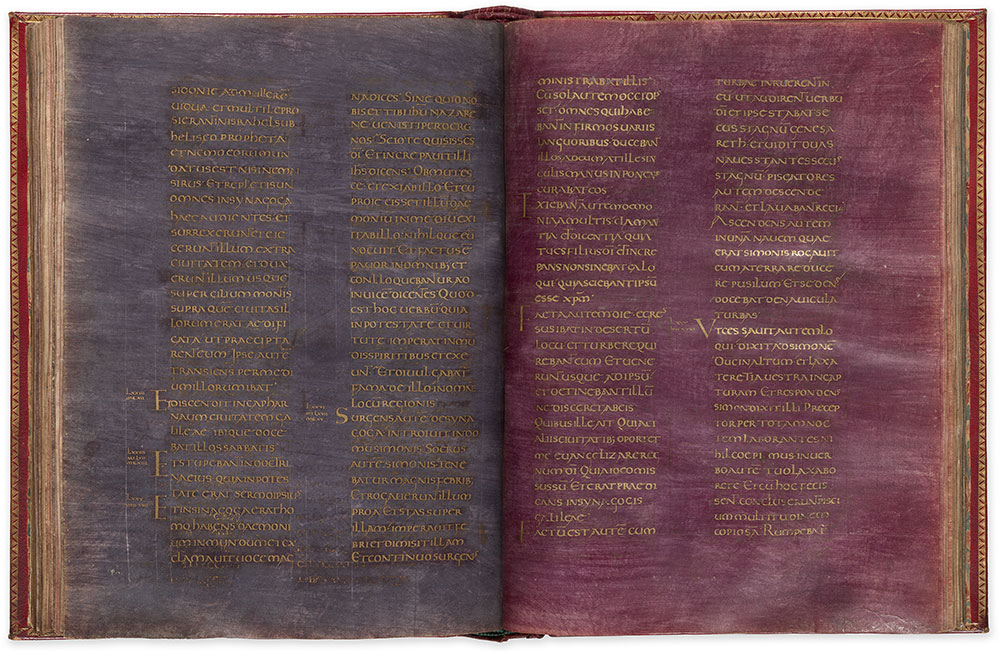OTTONIAN PATRONAGE
This Gospel book was written entirely in gold ink on purple-painted parchment. It evokes the venerable tradition of ancient manuscripts represented by the fragmentary leaf from a sixth-century Gospel book displayed above.
The “Golden Gospels” contains only the sacred text, written in double columns using an uncial (uppercase) script long out of fashion by the tenth century. With as many as sixteen scribes copying the text, the finished leaves were stacked together before the gold ink was completely dry, leaving visible offsets. The plant-based purple pigment varies in hue to such an extent that several batches must have been made, without regard for consistency. The manuscript was likely created in haste, perhaps as an imperial gift to mark a particular occasion for which there was little time to prepare. The intended recipient is unknown, but in the sixteenth century it was owned by King Henry VIII of England.
"Golden Gospels," in Latin
Germany, Trier, ca. 980
The Morgan Library & Museum, MS M.23, fols. 72v–73r
Purchased by J. Pierpont Morgan, 1900
Leaf from a Gospel Book (“Codex Petropolitanus”), in Greek
Syria, Antioch (?), sixth century
The Morgan Library & Museum, MS M.874
Purchased, 1955
Joshua O'Driscoll, Assistant Curator of Medieval and Renaissance Manuscripts
This grandiose gospel book is the last in a long line of deluxe manuscripts written entirely in gold or silver ink on parchment that has been stained purple, a color traditionally reserved for emperors and their family. This ancient tradition dates back to the time of the earliest Christian emperors like Constantine the Great, who ruled in the early fourth century. However, by the time this manuscript was made, in the late tenth century, the tradition of the purple codex had largely come to an end. The patron of this manuscript, who may have been Archbishop Egbert of Trier, a former chancellor of Emperor Otto II, likely intended to recreate the appearance of an ancient purple manuscript.
This gospel book was almost certainly made as a gift, and its production involved an enormous team of skilled artisans, including as many as sixteen scribes. They worked in great haste, often stacking together the freshly written pages before the gold ink was completely dry, which explains the offsets visible at the bottom of the left page. The fact that this book was later owned by King Henry VIII of England suggests that it may have been created as a gift from the Ottonian emperors to an English dignitary.
A brief painted inscription runs along the outer fore-edge of the manuscript, stating that “the inside of the book is more ornate than the outside.” This inscription refers in a typically medieval way to a now-lost treasure binding that once adorned the manuscript. The inscription juxtaposes the conspicuous material value of the now-lost jeweled covers with the much greater spiritual value of the book’s text.


